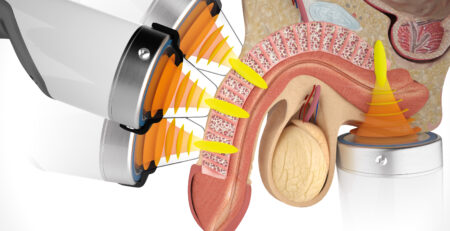The malignant disease of the prostate (carcinoma of the prostate) is the most frequent tumour of men. With 200 out of 100 000 afflicted this tumour is a real medical challenge and has got to be especially focussed on by med care. 84 out of newly afflicted patients stay alive for five years following the surgery. Also costs of more than € 8 billion a year urgently call for preventive medication and treatment. In 2018 1215 men died o this potentially lethal disease.
Risk factors
There is a growing probability of developing prostate cancer while growing older. On an average, patients are 69 years of age when this tumour gets discovered. Due to an expected over aging of the population current numbers will have doubled by 2050. Since familial aggregation must be seen as a decisive factor, men with fathers or brothers being diagnosed with this tumour are twice as frequently at risk to get this illness.
Preventive measures
A healthy lifestyle is known to be most essential here, but various singular substances such as selenium, vitamin E, mistletoe extracts etc. have not yet shown considerable preventive potential.
Testosterone and prostate cancer
Early studies partly point at there being a connection between testosterone and the development of prostate cancer, while recent research has proved it wrong. Some of these even show that low level testosterone may even bring forward tis tumour.
When ought medical check-ups start?
Basically this should happen regularly from age 45 on. In case of familial aggregation screening should start at age 40. This check-up includes a urinalysis, the palpation of the prostate and blood sampling to trace the PSA value (prostate specific antigen). All this ought to be explained to the patient prior to its application.
What if this PSA value is too high?
A second check-up should be made some weeks later. In case it stays up an MRT examination is the next step to take. Finally a biopsy of the suspected area ore the prostate as a whole is taken (fusion biopsy of the prostate).
Measures to be taken if malignant cells have been discovered
Prior to therapeutic measures the urologist’s explanation of the tissue sample should follow and depending on biopsy results, the PSA value and expectations the following options can be offered:
Active supervision of the tumour
This option is rare as both the tumour and PSA values are checked regularly, and MRT examinations and re-biopsies are carried out. Changing results are likely to cause therapeutic adaptations.
Surgical intervention
There are three options of a radical prostatectomy:
Immediate surgery, laparoscopic or robot assisted intervention Urine loss, a failure of ejaculation and erection. Due to international guide-lines (European Urological Society, German Urological Society) all these three measures are of equal value. and it is largely the surgeon’s experience that counts here.
Radiotherapy
Depending on both the tumour status and the prostate size it can be applied from outside (percutaneously) and from inside (brachytherapy). The former should happen at a range of 74 – 80 Gray and applied in small doses, combined with a hormone therapy.
Hormone withdrawal therapy
This therapy is used prior to radiotherapy or in case a locally progressive tumour/metastases have been found.
Alternative methods
Various experimental therapies are available (hyperthermia, focussed ultra-sonics – HFIU, crypto therapy) all of which should be offered within clinical studies only.




